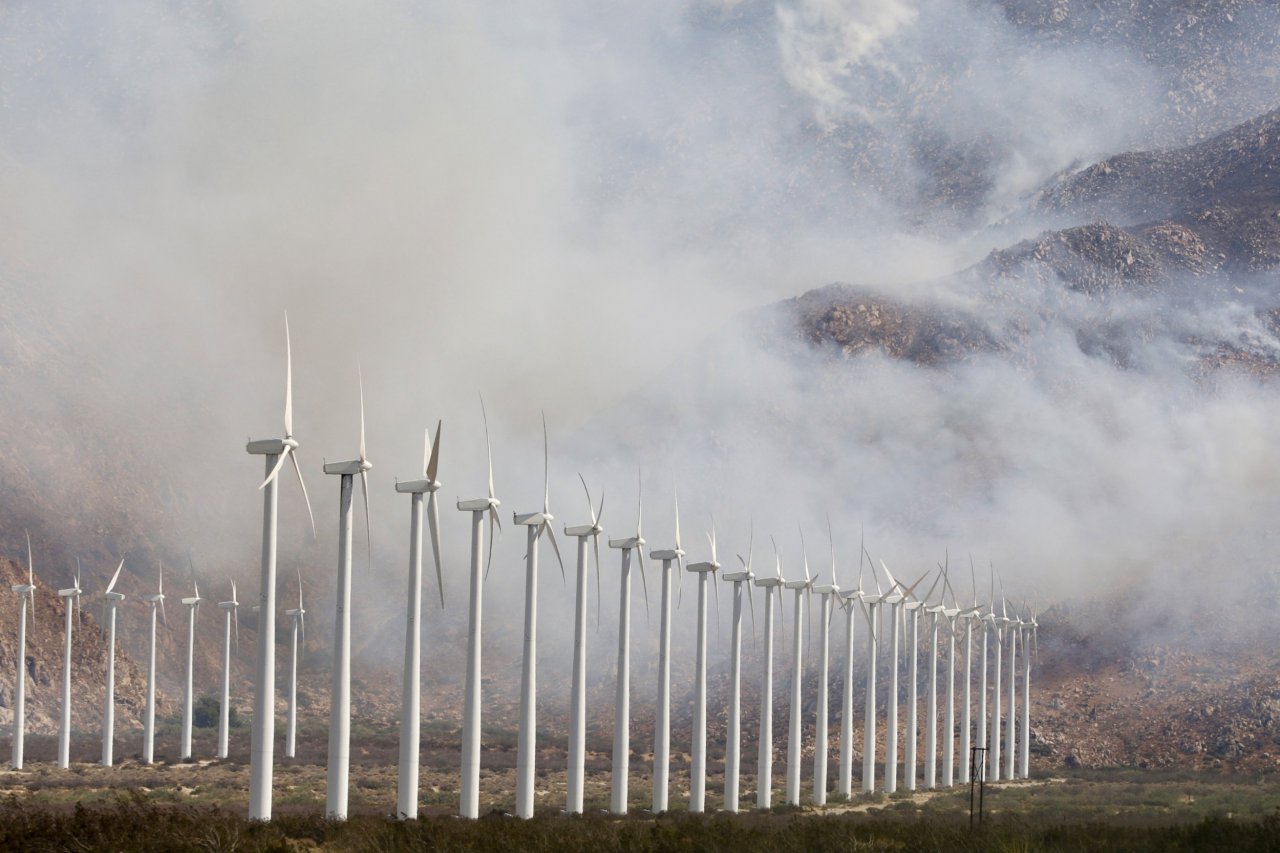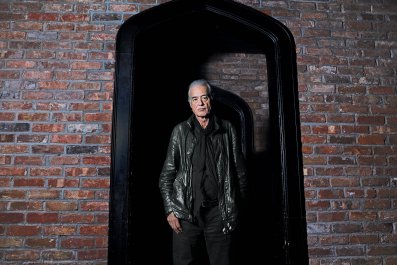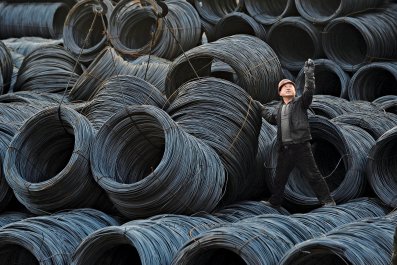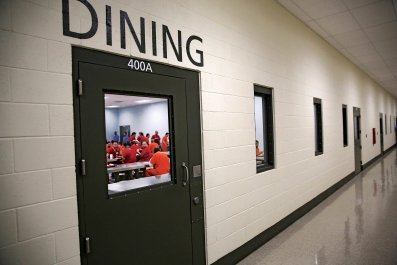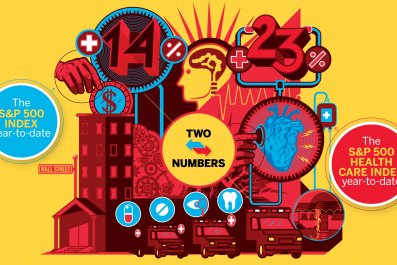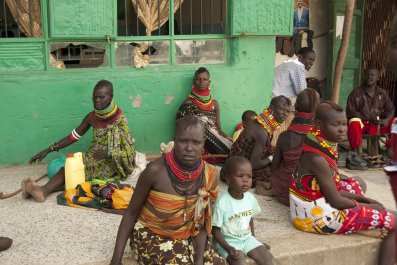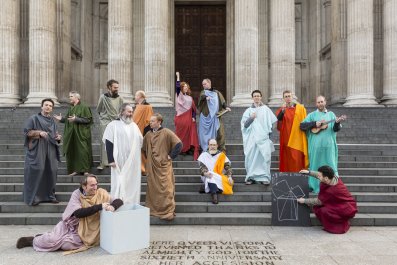Start near the Los Angeles International Airport and head due east on the Santa Monica Freeway, one of the busiest stretches of road on the globe, bumper to bumper with luxury V-6's, exhaust-spewing pickups and hybrid sedans, all crawling through the Los Angeles megalopolis, sparkling under the famously omnipresent Southwest sun. Take the freeway through the suburbs, sprawling blocks of well-tended lawns and modern mansions, liberally sprinkled with chain restaurants and business parks. Then turn north on Interstate I-15, up and through the rugged San Gabriel Mountains, until it spits you out into the flat, dry land on the other side.
Here, instead of Jamba Juice you get Joshua trees. The only living things you might bump into are bighorn sheep and cottontail rabbits, and, once the sun sets, every star in the sky pops with laser clarity. This is the Mojave Desert, part of the interconnected swatches of desert land in California that, combined, make up the largest wilderness area in the Lower 48. It's also about to become host to the biggest renewable-energy projects in the world.
Already, 13 of them are built or on the way. There's the Desert Sunlight Solar Farm, under construction just east of Joshua Tree National Park; its solar photovoltaic cells will cover over 4,000 acres of public land administered by the federal Bureau of Land Management (BLM). When completed in 2015 (assuming things go as planned), it is expected to peak at a nominal power of 550 megawatts—making it the most powerful solar farm on the planet. There's also the McCoy Solar Energy Project, in the middle of the Mojave. When it's done, it will be even bigger and more powerful than Desert Sunlight, covering 7,700 acres of BLM land and 470 acres of private land, and with an electrical production capacity of 750 megawatts.
Then there are the wind farms. These produce less power than their solar brethren and take up much more space. The Ocotillo Wind Energy Facility, for example, covers 12,436 acres at the edge of the Anza-Borrego Desert State Park, near the border with Mexico, and produces 315 megawatts of power.
These projects are so big, they create their own ecologies and economies. "We're not talking about a small project, we're talking about a city the size of San Francisco," says David Lamfrom, who runs the National Parks Conservation Association's (NPCA) California Desert Program. "You'd just plop down a city in the middle of the wildest parts of the U.S."
And these new wind and solar farms—cities, call them, since they aren't like any farm you've seen—are only going to multiply in the coming years. The need for clean energy is expected to increase dramatically in the next decade, particularly after the U.S. and China recently announced a historic agreement to lower greenhouse gas emissions in their respective countries. At the core of the pact are two sets of commitments: The U.S. will lower emissions 26 to 28 percent by 2025 from the initial 2005 baselines, while China has agreed to set an emissions peak for 2030 and then commit to lowering emissions.
In large part, these gestures are symbolic. As many climate law experts point out, there is really no mechanism to enforce anything. In addition, the goals set are not nearly enough to change the course of the climate. However, the geopolitical impact is huge. China and the U.S. are the two biggest greenhouse gas emitters, and to date there has been a kind of standoff, with both countries waiting for the other to commit to change before jumping in. Meanwhile, international talks to lower emissions have mostly stalled without the U.S. or China on board.
But now, the phrase "China's not doing anything" is off the table, says Ethan Elkind, associate director of the University of California, Berkeley/UCLA Schools of Law's Climate Change and Business Program. "The fact that China has committed to this puts the whole global effort [toward emissions reduction] into a new gear."
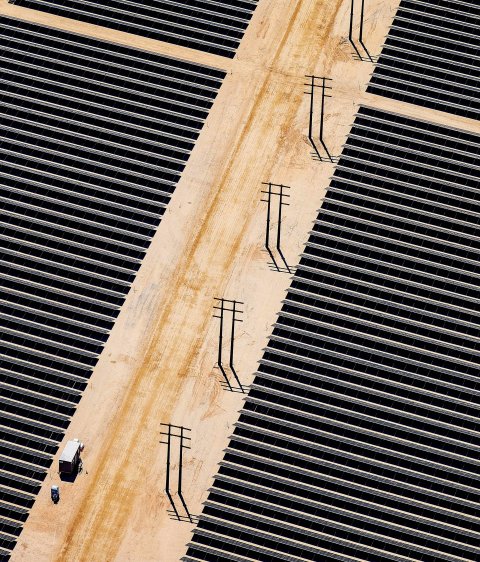
For years, California has been at the helm of this particular ship. The Golden State has established a highly successful mix of cap-and-trade policies (mandating "caps" on the amount of emissions and creating a "trade" market for carbon credits) at the industrial level and incentives for businesses and homeowners to install their own rooftop solar cells. These, and other efforts, have put California on pace to not only meet but exceed its own renewable-energy goals.
"The science seems to indicate that in the next 10 years, we need to have about one-third of our power from renewable sources," says Elkind. Today, while the U.S. gets about 10 percent of its energy from renewable sources (sun, wind and water), California is already at 22.53 percent and is on track to clear 40 percent by 2020 without breaking a sweat.
Green energy development is going fast and furious in California. When the notion of making the high desert ground zero for solar power was proposed five years ago "there was a gold rush," says Lamfrom. "People just started picking places on maps."
The pace—and place—of development has been a sore spot for many conservationists, who say that while green tech is great, projects to date have ignored the local ecology. Earlier this month, for example, The Associated Press reported that BrightSource Energy's Ivanpah Lake solar farm, just north of the Mojave near the Nevada border, was attracting and killing 28,000 birds a month, according to estimates by the Center for Biological Diversity. (BrightSource says the number is closer to 1,000.) Workers, the AP said, call birds that "fly through the plant's concentrated sun rays 'streamers,' for the smoke plume that comes [when they] ignite in midair."
Before the solar farm was constructed, the NPCA's Lamfrom told CBS Los Angeles that "we are supportive, in concept, of the Ivanpah project. We were not supportive of the location." Lamfrom tells Newsweek the NPCA supports renewable energy but wants to ensure that the press and public aren't fooled by the industry's greenwashing of projects that are harmful for the environment, despite industry claims.
The big renewable-energy companies, on the other hand, will tell you that they'd love to be providing more green energy but are hamstrung by the limitation to develop in those places where sunlight and wind are most abundant: the desert wilds. And as the U.S. Environmental Protection Agency points out on its website, one of the biggest barriers to meeting renewable-energy targets is getting the permits needed to build.
Navigating this tortuous path between clean energy and clean development might get a little easier with the Desert Renewable Energy Conservation Plan (DRECP). A recently published draft is 8,000 pages long, the result of a five-year, multi-agency (federal and state) effort to analyze 22.5 million acres of public and private land in the California desert and define where energy companies can build. It should set the stage for the (presumably eco-friendly) development of over 20,000 megawatts of renewable energy by 2040, spread across about 2 million acres.
Most California desert stakeholders are cautiously optimistic that the DRECP will be an improvement on the status quo. But Lamfrom says that while the DRECP "is the first attempt at real landscape-level planning…there are a few projects here that undermine the purpose of the plan." One he points to is the Soda Mountain Solar project, proposed by the Bechtel Corporation (the largest construction and civil engineering company in the U.S.) for construction immediately adjacent to the Mojave National Preserve.
"It's a sleight of hand," says Lamfrom. "On the one hand, we're doing this great thing, but on the other hand, it's just business as usual."
Besides being an important wildlife corridor—the National Park Service, for example says any development there will have a significant impact on the desert tortoise, bighorn sheep, and the yellow-headed blackbird among others—the project would likely affect the local humans as well;. "You have these communities that have basically developed their lives and futures around people visiting," says Lamfrom. If the land is ruined, all that tourism money will disappear. Given that the project will include 2,200 acres of some 1.7 million solar panels (not to mention miles of new access roads, new substations, and more) it is certain to drastically change the landscape; the Mojave National Preserve has opposed the siting, arguing that it will hinder their ability to protect their park.
Last week, the BLM announced that they had officially rejected the application of another controversial development, the Silurian Valley Solar project—a big win for conservationists. However, a wind energy project proposal that includes 66 to 133 wind turbines (each about 450 feet tall) taking up somewhere between 10 and 24 square miles in the Silurian Valley is still in play.
And while that wind city is more Pomona than San Fran in terms of size, it would still "drive a knife into the land and into our economy," says Susan Sorrells, who has managed Shoshone, a 50-person California desert outpost, since 1980. Sorrells argues that a much more sustainable and ecologically sound renewable-energy plan would focus on "distributed energy instead of these big farms"—in other words, finding ways to install solar panels and other renewable-energy technology in the individual homes and towns of coastal California that currently suck up all of the desert-harvested energy.
And some experts agree. "It's cheaper to have a big mass—having power all come from one source," says Elkin. "But the advantages of having a more distributed rooftop-type solar is that you can provide the power generation really close to being used. It's more efficient." He says we are probably headed toward a mix, with "microgrids" providing neighborhoods with access to small, local solar farms.
Until then, though, achieving emissions reductions at the scale of what has been agreed to between the U.S. and China "is not going to happen without some level of large-scale renewable-energy development," says Helen O'Shea, director of the National Resources Defense Council's Western Renewable Energy Project.
And Michael Gerrard, director of the Sabin Center for Climate Change Law at Columbia University, says that if conservationists keep fighting that, they will be missing the forest for the trees. "We are facing a mass extinction," he says. "The only pathway to solve that problem involves a massive increase in renewable energy. Unfortunately, many new renewable-energy facilities have been slowed down or stopped because of their adverse effects on certain species. I think we can no longer have the luxury of doing that."



